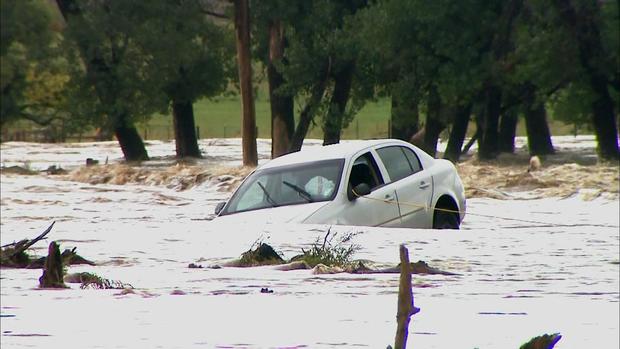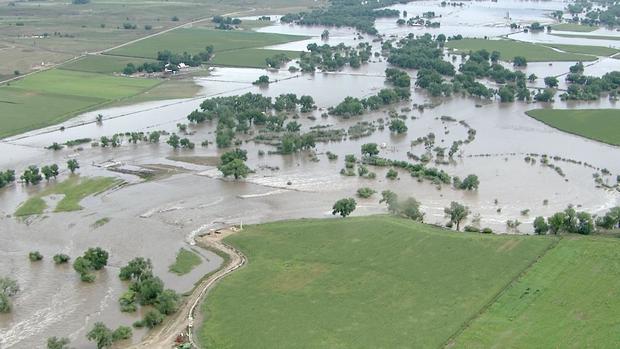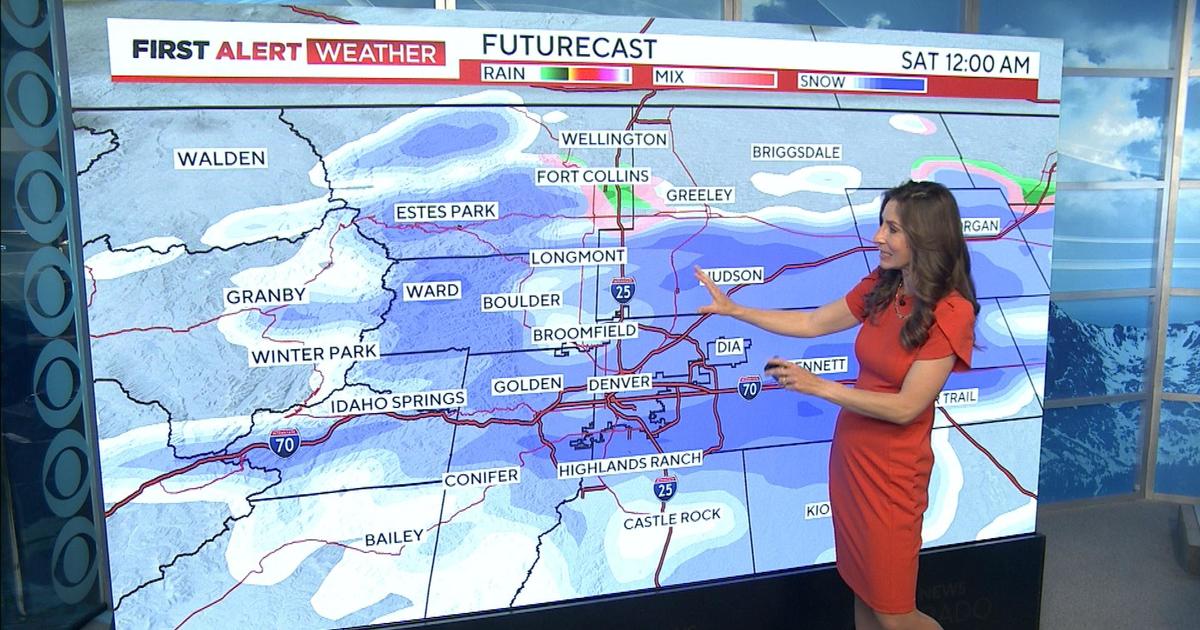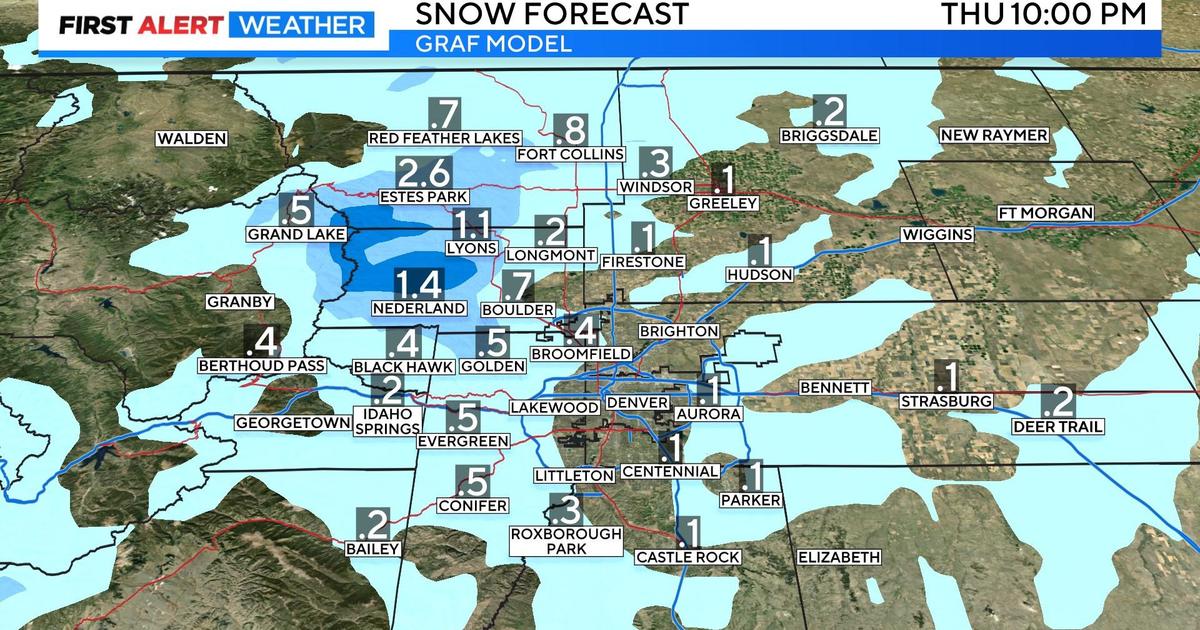Severe Weather Awareness Week: Not All Colorado Floods Are Created Equally
DENVER (CBS4) - Severe weather season can bring many hazards to Colorado including floods and flash floods.
A flood is a rise in water along a river, creek or stream caused by either runoff from melting snow or several days of heavy rain.
Floods can often be predicted in advance and while they do present a danger, people living in or near a flood zone typically have time to protect their property and evacuate.
A flash flood, however, is much different because they happen very fast and catch people off guard.
Flash floods are most often associated with slow moving strong to severe thunderstorms, but can also be caused by a dam break or a clog in the flow of water along a stream.
Flash floods are very common in and around burn scars after a wildfire.
RELATED: KNOW YOUR COUNTY, DOWNLOAD OUR FREE CBS4 SEVERE WEATHER GUIDE
Nearly half of all flood related deaths are vehicle related because drivers enter flooded roadways.
Most vehicles can be carried away by less than two feet of swift moving water.
When a road is covered with water it's nearly impossible to tell how deep the water is and if the road below is damaged or washed out.
It's best to always remember the phrase "Turn Around, Don't Drown" if in a vehicle and you encounter a flooded roadway.
COLORADO'S FLASH FLOOD RISK IS ELEVATED
When it comes to the potential for a devastating flash flood, Colorado has several factors that add to the risk.
Wildfires - The numerous burn scars around Colorado are very prone to flash flooding because the fire's intense heat changes the landscape. Rainwater can no longer infiltrate into the soil and there is also a lack of vegetation to absorb and reduce runoff. The flood threat in and around a burn scar continues for several years.
Drought - Drought is part of Colorado's climate. After an area has experienced a prolonged drought the ground is extremely hard. When heavy rain falls in a short period of time the region is more prone to runoff and flash flooding.
Terrain - Rugged terrain and rapid changes in elevation make Colorado prone to flash floods, especially in and near the foothills. In some instances, thunderstorms can actually become stationary over mountains and foothills and create a deadly scenario, such as the Big Thompson Flash Flood of 1976, when a stationary thunderstorm near Estes Park dropped extremely heavy rain and sent a deadly wall of water down the canyon.
Mountains - When the wind patterns are favorable they can interact with a mountain range and produce enhanced precipitation. It's much like the analogy of wringing water out of a wet sponge. If the weather pattern is persistent, it can cause a bad situation to develop quickly, much like what we saw in September of 2013.
WATCH VS. WARNING
When flooding is a threat to Colorado, the local offices of the National Weather Service will issue watches, warnings or advisories.
A watch simply means to watch the skies and pay close attention to the weather, especially over the next six hours, because things could rapidly change.
A warning is more urgent and means that a weather hazard such as a flash flood is either imminent or occurring in your area.
Occasionally you will see flood advisories issued in the spring and summer.
RELATED: UNDERSTANDING WATCHES AND WARNINGS
An Urban Flood Advisory means that there has been heavy rain in the area and there could be impacts on roadways, such as in busy intersections.
A Small Stream Flood Advisory will be issued when a waterway is expected to be full and could produce minor lowland flooding.
Meteorologist Chris Spears writes about stories related to weather and climate in Colorado. Check out his bio or follow him on Twitter @ChrisCBS4.







